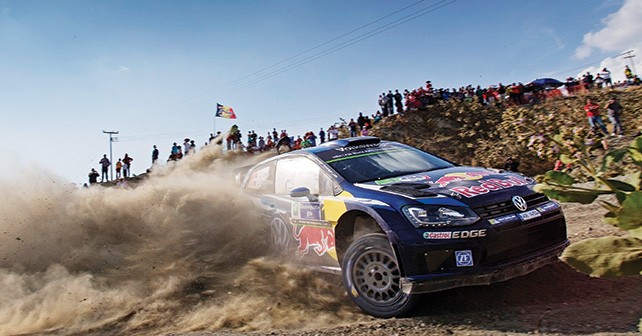Despite its fair share of drama, the Mexican round of the WRC had a predictable outcome, which may make things look boring but it’s no fault of the winners
Being well prepared in motorsport doesn’t seem to be the ‘in thing’ these days. When a highly skilled racer and a thoroughly well-prepared and well-funded team throw their hat into the ring, the spectre of predictability starts to loom.
And while that may be fine and good with motorsport fans who follow it purely because they can’t think of anything that excites them more, occurences of predictability affect big championships like the World Rally Championship enough for the less casual fans and some sporadically interested ones to turn their attention elsewhere.
One of the advantages that the WRC has, however, is that rallying by nature is a somewhat unpredictable and time consuming undertaking. Competitors travel the world over and tear through stages that are off the beaten track in their savage ‘little’ machines.
So for Sebastien Ogier and Volkswagen to be as dominant as they are is seen as a justifiably laudable achievement. However, such sentiments are largely shared by hardcore rallying fans only. Outside of that group though there is the usual hue and cry of a particular motorsport discipline becoming ‘boring’ because there is invariably just one winner. Such sentiments were echoed during the Sebastien Loeb era of domination; even when his battles for the WRC title with Marcus Gronholm and then Mikko Hirvonen went down to the wire.
The WRC had, by that point, reached the stage where it took very well funded manufacturer teams with the best drivers behind the wheel to be able to challenge for the title. Total special stage distances had were lower than as compared to the 1980s and 1990s and even the locations that the WRC distances were considered ‘tame’ by those who recalled the Group B and early Group A eras.
Add to this the global economic crisis that forced out the famous Japanese marques (Toyota left for very different reasons though) and you get the situation the WRC is in now after Loeb’s retirement. The one man who could have regularly put up a challenge (Ogier) to him has no real opposition except for himself.
Certainly not 27-year-old Ott Tanak as yet, who at Rally Mexico provided the WRC with one of the images of the year as he overshot a turn, sending his M-Sport World Rally Team Ford Fiesta into a lake.
The images and video spread like wildfire and brought a slight spike in interest in the event. WRC bosses who have previously bickered over changes to the format of rallies to make their conclusion more exciting would have been forgiven for being slighlty morbid as Tanak and co-driver Rago Molder waded to safety.
The WRC was getting eyeballs but not for the same reason as say, MotoGP. It’s an unfair comparison given the difference in disciplines but the point is that unpredictability in the outcome of a rally is what is being strived for rather than the one-off crazy crashes.
In that sense, the WRC is in the same boat as Formula 1 where Mercedes and Lewis Hamilton’s dominance along with other teams’ upreparedness is illiciting cries of ‘boooooring’ from those other than the fans who know success is as fleeting in motorsport as unpredictability.
Some have even gone so far as to say that the World Rallycross Championship (WRX) may surpass the WRC in popularity due to drivers racing each other over a closed dirt course complete with jumps and even stretches of tarmac. That may not go down too well with purists unless the WRC can do something to inject a bit of competitiveness between participating teams. Either that or Volkswagen instruct its drivers to compete blidfolded!






























Write your Comment